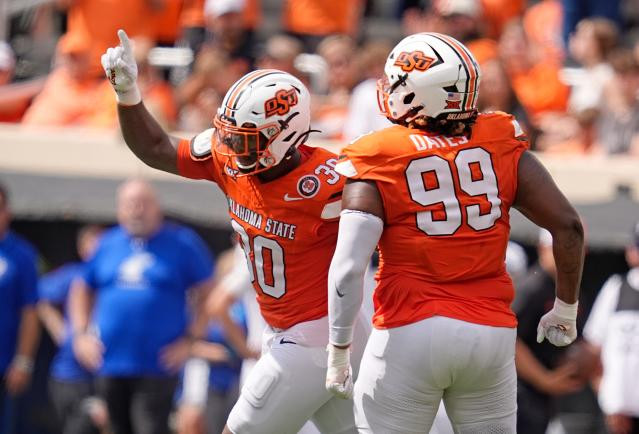Oklahoma State University’s innovative plan to add QR codes to their football helmets has been sidelined by the NCAA. This decision highlights the ongoing tension between Name, Image, and Likeness (NIL) opportunities for student-athletes and the established rules governing college sports. The university had intended to use the QR codes to direct fans to a platform supporting their NIL fund, but the NCAA deemed this a violation of advertising restrictions on uniforms.
OSU Athletic Director Chad Weiberg expressed disagreement with the NCAA’s interpretation but confirmed the university would comply. He stated, “We disagree with the interpretation of the rule but will abide by it and work with the appropriate groups to lead on the needed change. Our people came up with an innovative concept to raise the NIL value of our student-athletes, but ultimately, it just serves as the latest example of how college sports are evolving at a faster pace than the rule book.” This ruling was enforced immediately, with the Osu Football Uniforms appearing without the QR codes in their game against South Dakota State.
OSU’s Innovative NIL Strategy for Football Uniforms
Oklahoma State’s initial concept was ambitious and extended beyond just the football helmets. The QR codes were intended to be featured on various items associated with the football program. This included player travel bags, the equipment truck, and stadium signage, creating multiple touchpoints for fans to engage with and contribute to the NIL fund. This multi-faceted approach demonstrated OSU’s commitment to maximizing NIL opportunities for their student-athletes through creative and modern methods.
NCAA’s Stance: Advertising Restrictions on College Football Uniforms
The NCAA, however, interpreted the QR codes differently. While OSU considered them “institutional decals,” permissible under NCAA bylaws, the governing body classified them as “advertising and/or commercial marks,” which are explicitly prohibited on team uniforms. This interpretation underscores the NCAA’s cautious approach to commercialization on college football uniforms and their desire to maintain a distinction between institutional branding and direct advertising. The core issue revolved around whether the QR code served primarily as a university identifier or as a promotional tool for a third-party entity – in this case, the NIL collective.
Despite the helmet ban, the NCAA has allowed OSU to use QR codes in other stadium areas. These include the video board, coasters, and player bag tags during pre-game events. This partial approval provides some consolation for OSU and allows them to utilize QR codes for NIL fundraising, albeit in a more limited capacity than initially envisioned for their football uniforms.
 Oklahoma State Helmets without QR Codes
Oklahoma State Helmets without QR Codes
Uniform Purity vs. NIL Opportunities in College Sports
The author of the original article expressed a viewpoint against advertising on uniforms, even considering the QR code, while not technically an ad, as functioning similarly. This perspective values the traditional, uncluttered aesthetic of sports uniforms. The author acknowledges the importance of NIL and supporting student-athletes financially but advocates for keeping uniforms free from commercial elements. This stance reflects a broader debate within sports about balancing revenue generation and maintaining the integrity and visual appeal of the game.
The situation with OSU football uniforms and QR codes highlights the challenges of navigating the evolving landscape of college sports. While the NCAA’s decision restricts one particular avenue for NIL fundraising, it also opens up questions about the future of uniform customization and potential commercial partnerships in college athletics. As college sports continue to adapt to the NIL era, discussions around acceptable forms of branding and advertising on team apparel are likely to persist.
